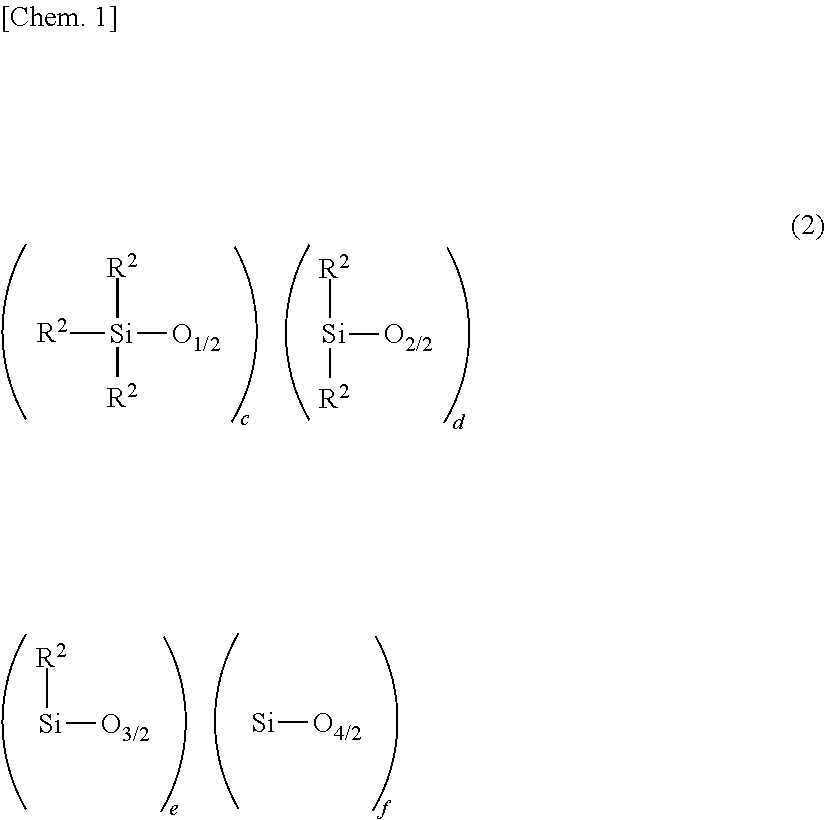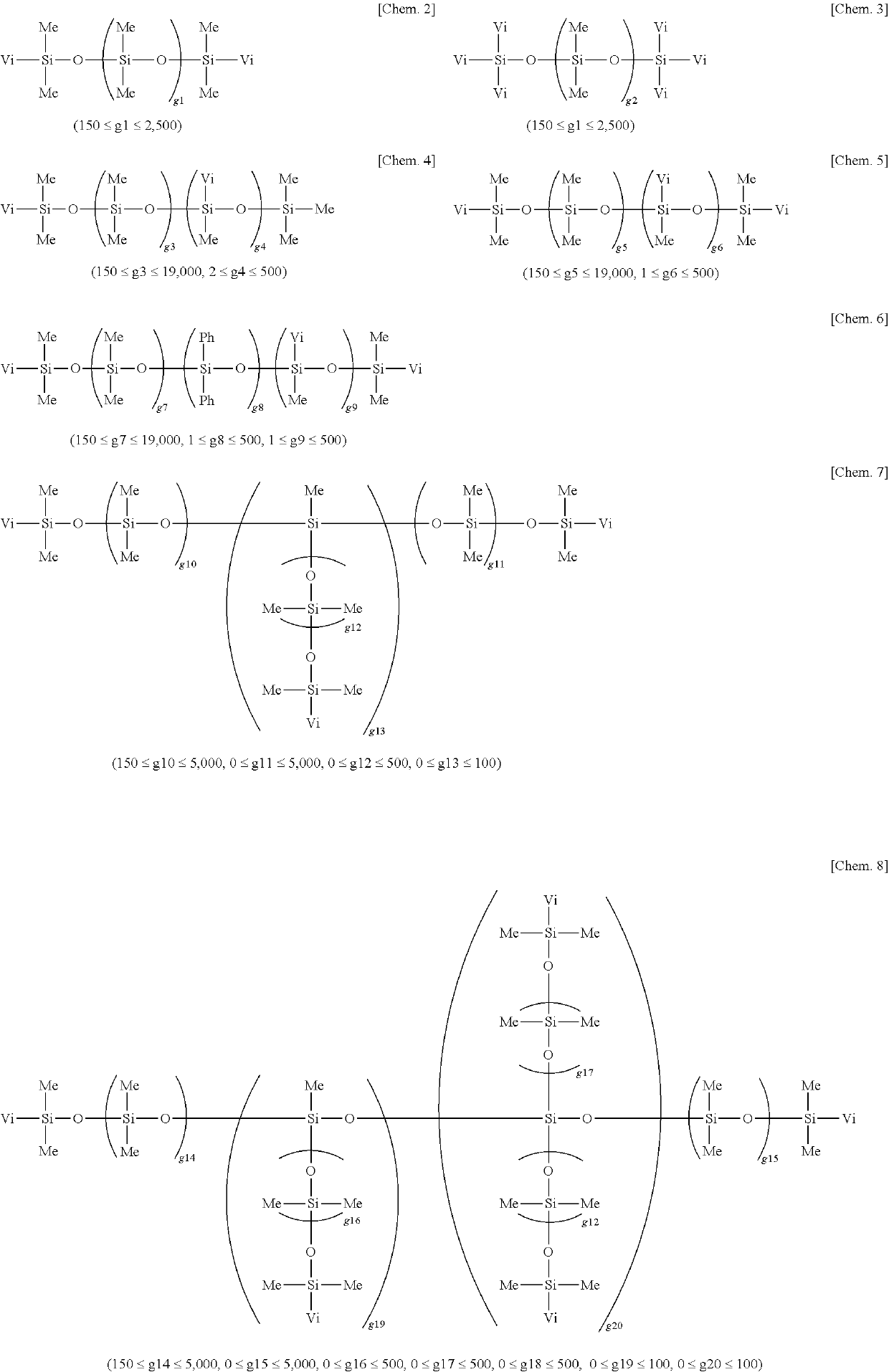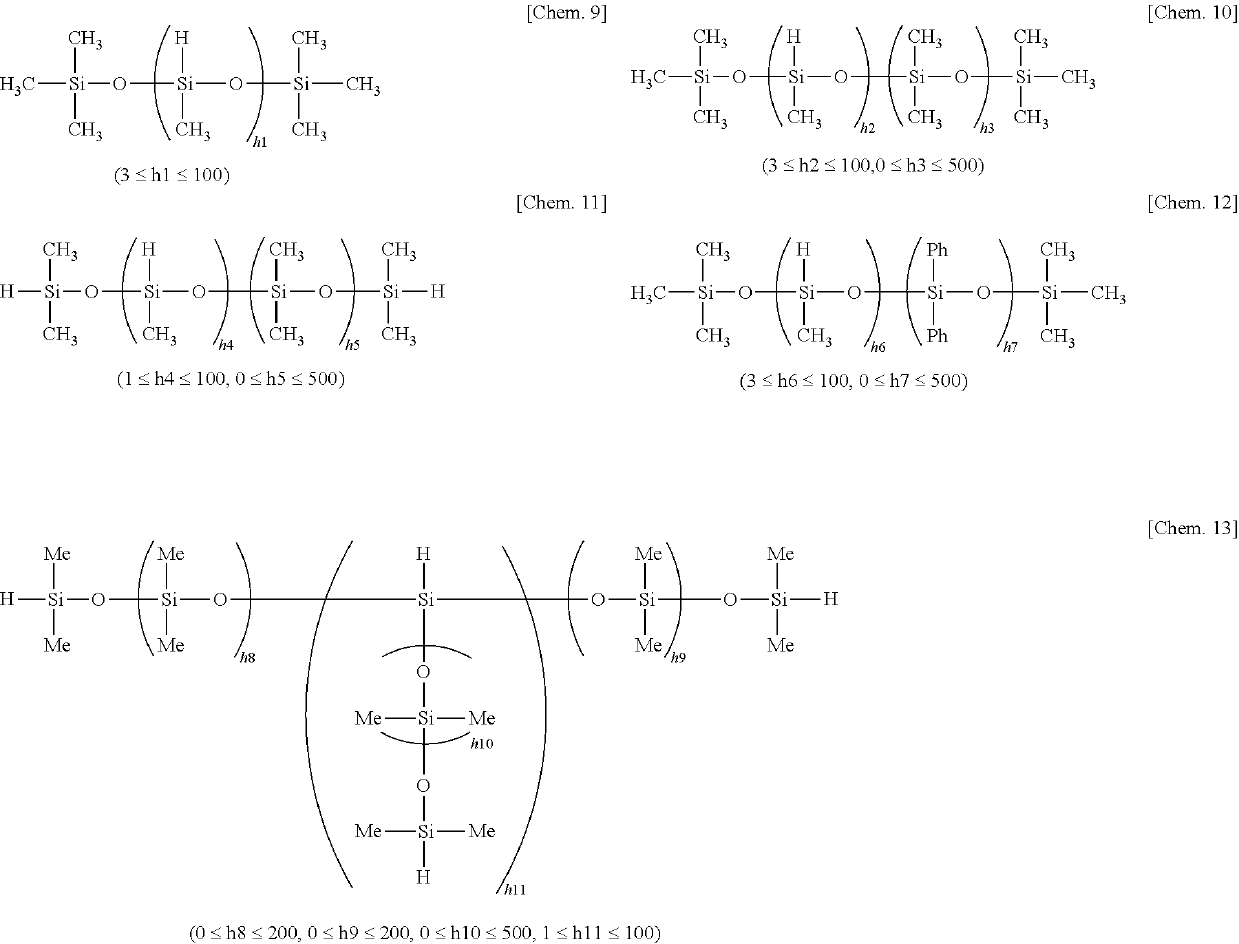Silicone composition for release paper or release film
a silicone composition and release film technology, applied in film/foil adhesives, other chemical processes, synthetic resin layered products, etc., can solve the problems of pressure-sensitive adhesive charging, inefficiency, foreign particle adsorption, etc., to improve antistatic and release properties, satisfactory safety and cure behavior
- Summary
- Abstract
- Description
- Claims
- Application Information
AI Technical Summary
Benefits of technology
Problems solved by technology
Method used
Image
Examples
examples
[0110]Synthesis Examples, Examples and Comparative Examples are given below for further illustrating the invention, but the invention is not limited to Examples. In Examples, parts are by weight (pbw).
Preparation of Silicone Composition and Release Film
(Component (A))
(A-1)
[0111]an organopolysiloxane consisting of 0.02 mol % of dimethylvinylsiloxane units: (CH3)2(CH2═CH)SiO1 / 2, 0.48 mol % of methylvinylsiloxane units: (CH3)(CH2═CH)SiO2 / 2, 97.7 mol % of dimethylsiloxane units: (CH3)2SiO2 / 2, and 1.80 mol % of diphenylsiloxane units: (Ph)2SiO2 / 2
[0112]viscosity in 30 wt % toluene solution at 25° C.=15 Pa·s alkenyl content=0.0065 mol / 100 g
(A-2)
[0113]an organopolysiloxane consisting of 0.02 mol % of dimethylvinylsiloxane units: (CH3)2(CH2═CH)SiO1 / 2, 2.98 mol % of methylvinylsiloxane units: (CH3)(CH2═CH)SiO2 / 2, and 97.00 mol % of dimethylsiloxane units: (CH3)2SiO2 / 2
[0114]viscosity in 30 wt % toluene solution at 25° C.=10 Pa·s
[0115]alkenyl content=0.040 mol / 100 g
(Component (B))
(B-1)
[0116]a...
PUM
| Property | Measurement | Unit |
|---|---|---|
| viscosity | aaaaa | aaaaa |
| viscosity | aaaaa | aaaaa |
| weight | aaaaa | aaaaa |
Abstract
Description
Claims
Application Information
 Login to View More
Login to View More - R&D Engineer
- R&D Manager
- IP Professional
- Industry Leading Data Capabilities
- Powerful AI technology
- Patent DNA Extraction
Browse by: Latest US Patents, China's latest patents, Technical Efficacy Thesaurus, Application Domain, Technology Topic, Popular Technical Reports.
© 2024 PatSnap. All rights reserved.Legal|Privacy policy|Modern Slavery Act Transparency Statement|Sitemap|About US| Contact US: help@patsnap.com










